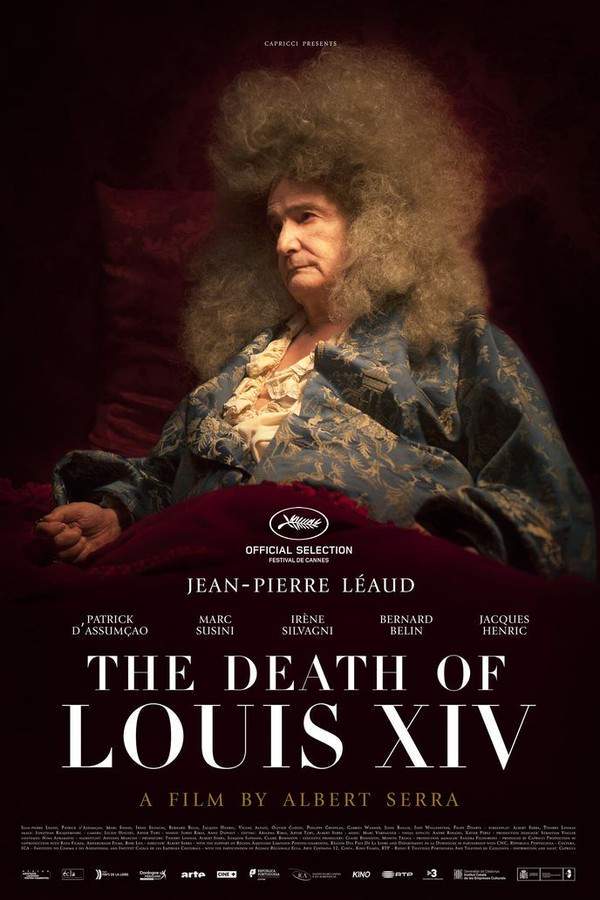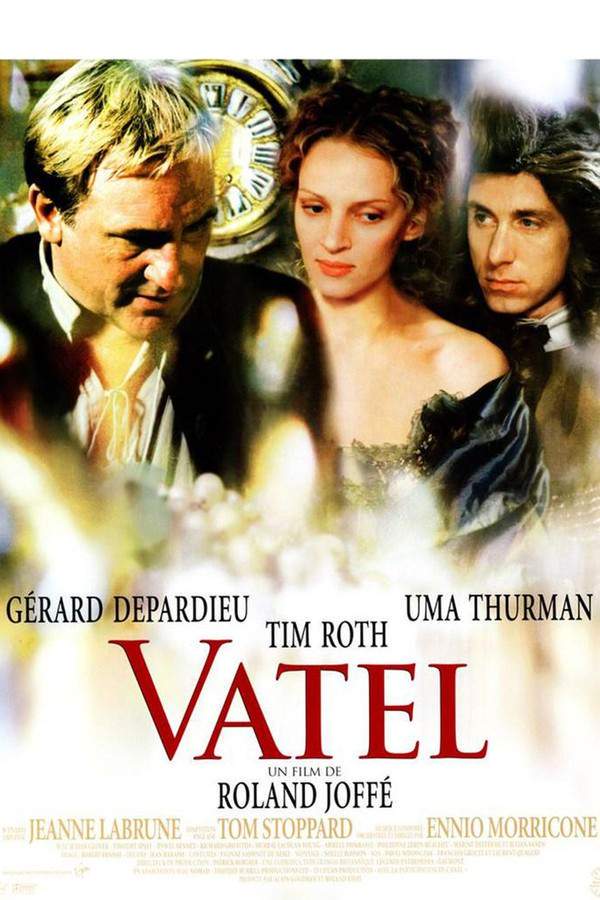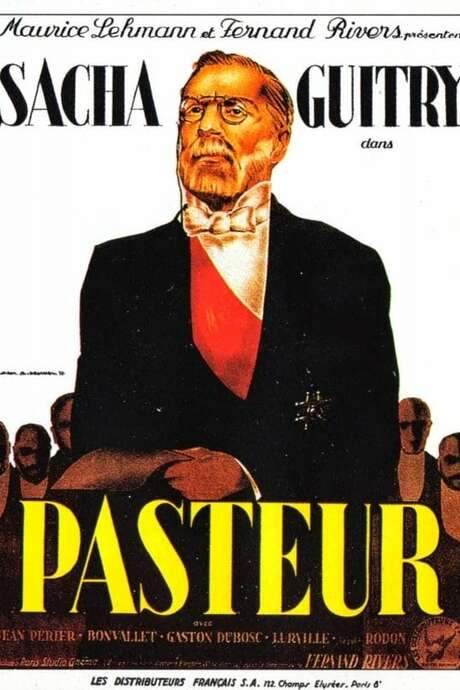
The Story of Louis Pasteur
Year: 1936
Runtime: 86 mins
Language: English
Director: William Dieterle
A true story of Louis Pasteur, the pioneering scientist whose discoveries showed that microbes cause many diseases, emphasized the importance of sanitation, and led to the development of life‑saving vaccines. His work laid the groundwork for germ theory and introduced pasteurization, saving countless lives.
Warning: spoilers below!
Haven’t seen The Story of Louis Pasteur yet? This summary contains major spoilers. Bookmark the page, watch the movie, and come back for the full breakdown. If you're ready, scroll on and relive the story!
The Story of Louis Pasteur (1936) – Full Plot Summary & Ending Explained
Read the complete plot breakdown of The Story of Louis Pasteur (1936), including all key story events, major twists, and the ending explained in detail. Discover what really happened—and what it all means.
In 1860 Paris, a distraught man murders his wife’s doctor. [Paul Muni] Louis Pasteur has publicly championed the theory that microbes cause disease, urging doctors to wash their hands and sterilize their instruments in boiling water. The tragedy that follows—his wife dying of puerperal fever after childbirth—becomes a turning point, fueling his relentless pursuit of unseen causes and practical solutions in medicine.
France’s medical academy dismisses Pasteur as a crank, with the outspoken Dr. Charbonnet — portrayed by Fritz Leiber — treating his ideas as nothing more than witchcraft. Pasteur openly challenges Charbonnet’s non-sterile methods and warns that such recklessness could prove fatal. The scientist even predicts that a member of the Emperor Napoleon III’s circle who Charbonnet is tending will die of puerperal fever, a claim that fans the flames of controversy and puts Pasteur in direct opposition to the establishment. Walter Kingsford embodies the Emperor in the story, underscoring the political pressure that shadows scientific progress. Disillusioned by the hostility in Paris, Pasteur withdraws to Arbois, seeking a calmer ground on which to test his ideas.
The narrative shifts to the 1870s, as a new French government grapples with economic recovery after the Franco-Prussian War. They discover that sheep die of anthrax except near Arbois, a clue that points toward Pasteur’s work. The government buys land there and invites sheep farmers to test his approach, while Pasteur remains wary, insisting that the soil itself may be contaminated with anthrax spores. He proposes a bold experiment: vaccinate 25 of the newly arrived sheep and compare them to another 25 that receive blood from an infected sheep. The scene draws in key supporters, including Dr. Lister, a pioneer of antiseptic surgery in England, who attends and witnesses Pasteur’s method. On the personal front, Jean Martel, a young doctor who once assisted Charbonnet but now follows Pasteur, becomes engaged to Pasteur’s daughter, Annette. Donald Woods brings Martel to life, while Anita Louise plays Annette, welding professional ambition to intimate family ties.
Trouble erupts when a rabid dog runs through town and bites a man. A woman’s desperate attempt at cure by witchcraft underscores the stubborn limits of contemporary medicine, and Pasteur laments that doctors may have lost even their best chances of success. Returning to Paris, he makes rabies his next challenge. He experiments by exposing animals to the disease and attempting to shield others with vaccines, but he cannot yet detect any microbial agents—viruses had not been discovered—and the initial vaccine strategy with rabies falters. Dr. Charbonnet returns to gloat over Pasteur’s failures, injecting himself with rabies and seemingly escaping the disease. Pasteur is puzzled until his wife, Marie, suggests that the older sample may have weakened with age, prompting a crucial turn in his thinking. Josephine Hutchinson embodies Marie Pasteur, offering emotional balance to the scientist’s clinical fervor. This hiccup becomes a catalyst, as Pasteur embarks on a more nuanced path, administering progressively stronger injections to dogs and refining the approach.
A desperate mother arrives with her rabies-bitten child—her plea compels Pasteur to act, despite the looming risk of legal and professional jeopardy for practicing medicine without a license. The boy’s case becomes a defining moment, and Pasteur accepts the moral duty to try an untested treatment. At this juncture, Dr. Zaranoff arrives from Russia with a group of peasants exposed to rabies, volunteering for Pasteur’s protocol. Akim Tamiroff embodies Zaranoff, signaling an international dimension to Pasteur’s work. Meanwhile, Annette goes into labor with Martel’s child, and the scheduled birth places additional strain on an already fragile situation. When an available physician cannot attend, Pasteur seeks Charbonnet’s help once more, and Charbonnet agrees to a tense compromise: if Pasteur retracts his rabies work within a month, Charbonnet will concede and withdraw his opposition. The birth proceeds with success, but Pasteur suffers a mild stroke in the process.
Later, news arrives that Pasteur has permission to treat the Russians who remain alive after exposure. He attends them in hospital for the first injections, moving from a wheelchair to a cane as the days progress. The breakthrough vindicates his method, and even Charbonnet yields, tearing up his retraction and requesting the shots himself. In the aftermath, Pasteur learns that the renowned Dr. Lister may denounce him at the medical academy, but the anticipated confrontation dissolves into celebration: Lister praises the work, Dr. Zaranoff presents his Russian medal, and the medical community ultimately honors Pasteur for a visionary line of research that bridged theory and practice, transforming the future of medicine.
Last Updated: October 05, 2025 at 11:15
Unlock the Full Story of The Story of Louis Pasteur
Don't stop at just watching — explore The Story of Louis Pasteur in full detail. From the complete plot summary and scene-by-scene timeline to character breakdowns, thematic analysis, and a deep dive into the ending — every page helps you truly understand what The Story of Louis Pasteur is all about. Plus, discover what's next after the movie.
The Story of Louis Pasteur Timeline
Track the full timeline of The Story of Louis Pasteur with every major event arranged chronologically. Perfect for decoding non-linear storytelling, flashbacks, or parallel narratives with a clear scene-by-scene breakdown.

Similar Movies to The Story of Louis Pasteur
Discover movies like The Story of Louis Pasteur that share similar genres, themes, and storytelling elements. Whether you’re drawn to the atmosphere, character arcs, or plot structure, these curated recommendations will help you explore more films you’ll love.
Explore More About Movie The Story of Louis Pasteur
The Story of Louis Pasteur (1936) Scene-by-Scene Movie Timeline
The Story of Louis Pasteur (1936) Movie Characters, Themes & Settings
The Story of Louis Pasteur (1936) Spoiler-Free Summary & Key Flow
Movies Like The Story of Louis Pasteur – Similar Titles You’ll Enjoy
The Death of Louis XIV (2017) Ending Explained & Film Insights
Radioactive (2020) Full Movie Breakdown
Vatel (2000) Spoiler-Packed Plot Recap
Dr. Petiot (1990) Film Overview & Timeline
Les Misérables (1934) Movie Recap & Themes
Orphans of the Storm (1921) Full Movie Breakdown
Dr. Ehrlich’s Magic Bullet (1940) Detailed Story Recap
Monsieur Vincent (1947) Ending Explained & Film Insights
Pierre and Marie (1997) Full Movie Breakdown
Les Misérables (1978) Complete Plot Breakdown
Pasteur (1922) Film Overview & Timeline
Pasteur (1935) Full Summary & Key Details
The Life of Emile Zola (1937) Film Overview & Timeline
The Case of Dr. Laurent (1957) Full Summary & Key Details
The Mysteries of Paris (1962) Story Summary & Characters

















